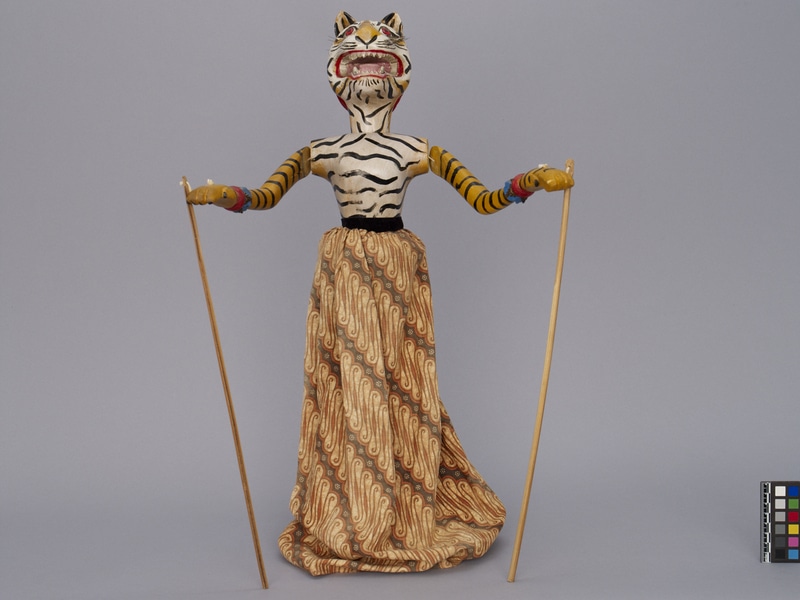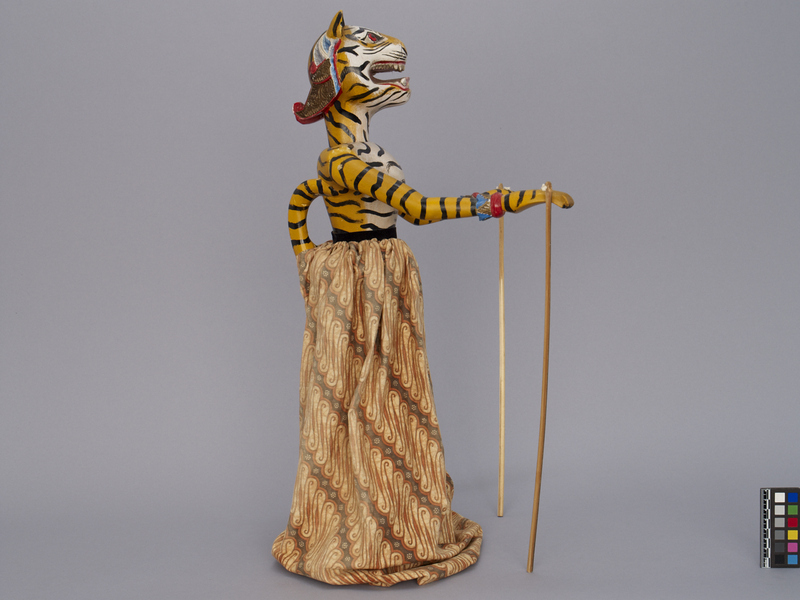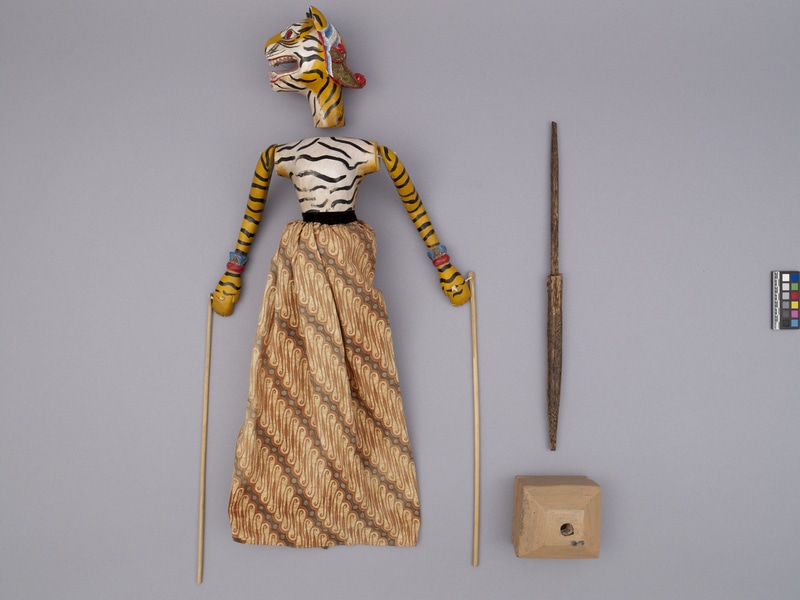Rod Puppet Item Number: 2872/29 a-d from the MOA: University of British Columbia





Description
Rod puppet (wayang golek) of a tiger, or harimau with a feline head and a tiger-human torso and arms. The wooden head (part a) has small pointed ears, behind which are golden decorations reaching to the neck. The eyes have red pupils, and the mouth is open, showing small pointed teeth and a pink tongue. Stiff plastic whiskers stick out of the snout. The head, torso and arms are painted with tiger stripes. The torso (part b) is bare, and at the back is a thick curved tail connected at waist and right shoulder. A sarong, belted at the waist, hides a wooden stick (part c) that extends up through the torso and into the puppet’s head to control its movement. The puppet’s wrists are adorned with red and blue bracelets and the arms are moveable at the shoulder by wooden sticks attached to each hand. The fingers of both hands are short, with painted claws on each tip. The stand (part d) is a square piece of painted wood.
History Of Use
Javanese puppetry as an art form probably developed by the 11th century. The three-dimensional wooden wayang golek puppets of western Java, which are to be distinguished from the earlier and more sacred wayang kulit shadow plays puppets or other forms, appeared during the 16th century. Originally the plays depicted Javanese mythology, but after the Indian conquest of Java the Hindu epics, Ramayana and Mahabharata, were incorporated into the cycles, which comprise about 200 plays. An individual or group hires a dalang (puppet-master) to celebrate important occasions. The performances often last all night and are generally presented in three acts, with vocal and instrumental accompaniment. The individual plays vary widely in detail but usually involve conflict between good and evil. They serve a moral and religious purpose, and more recently, one of political commentary. Each puppet's character is represented by its appearance and placement on stage; protagonists with strong elements of good are placed to the right, antagonists of violent or evil nature to the left. This depicts the character of a tiger, or harimau with a feline head and a human body.
Iconographic Meaning
Represents Tiger, a character from the Ramayana.
Item History
- Made in West Java, Indonesia
- Collected between 1990 and 1999
- Owned by Betty Cairney
- Owned by Jack Cairney before March 15, 2011
- Received from Jack Cairney (Donor) on March 15, 2011
What
- Name
- Rod Puppet
- Identification Number
- 2872/29 a-d
- Type of Item
- puppet
- Material
- wood, cotton fibre, plastic and paint
- Overall
- height 58.5 cm, width 17.0 cm, depth 40.0 cm
- Puppet
- height 80.0 cm, width 17.0 cm, depth 14.0 cm
Who
- Culture
- Sundanese
- Previous Owner
- Betty Cairney and Jack Cairney
- Received from
- Jack Cairney (Donor)
Where
- Holding Institution
- MOA: University of British Columbia
- Made in
- West Java, Indonesia
When
- Collection Date
- between 1990 and 1999
- Ownership Date
- before March 15, 2011
- Acquisition Date
- on March 15, 2011
Other
- Condition
- good
- Accession Number
- 2872/0029 a-d